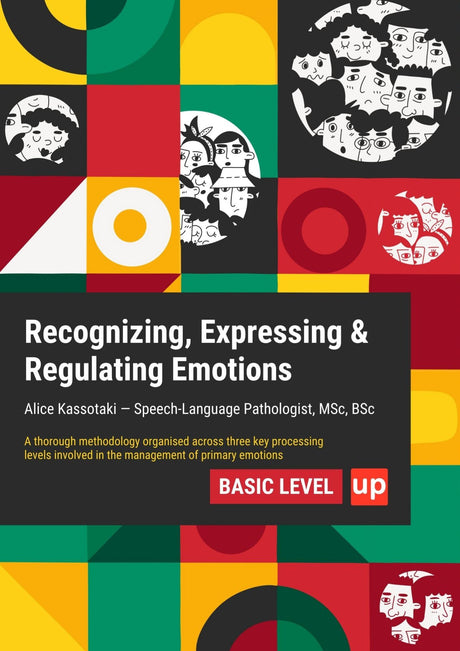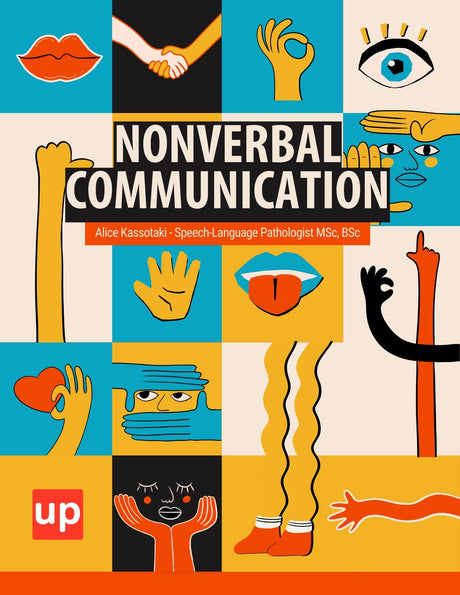For the millions of adults and children with ADHD, the gulf between knowing what to do and actually doing it can feel vast. The intention to exercise is there, but a wall of executive function challenges—difficulty with initiation, planning, and sustained motivation—often stands in the way. This isn't a failure of willpower; it's a feature of the ADHD brain's wiring. With diagnoses on the rise, affecting approximately 12% of children in the US, the need for accessible and effective management strategies is more critical than ever. This article breaks down that "can't start" barrier. It provides a science-backed, actionable blueprint to harness physical activity not as a chore, but as one of the most powerful tools available for enhancing focus, stabilizing mood, and building sustainable energy, starting today.
Key Points
- Exercise Acts Like Natural Medication for ADHD: Physical activity boosts dopamine and norepinephrine levels, neurotransmitters that are often lower in people with ADHD, enhancing focus, motivation, and mood in a way similar to stimulant medication.
- Variety and Enjoyment Are Critical for Consistency: To overcome ADHD-related challenges with boredom and motivation, incorporate a mix of engaging activities such as martial arts, dance, team sports, and mindful movement practices, making exercise feel like play rather than a chore.
- External Support and Structure Enhance Success: Using tools like workout buddies, scheduled appointments, fitness apps, and clear, achievable goals helps manage executive function difficulties and keeps your ADHD exercise plan on track for long-term benefits.
Introduction: Breaking Through the "Can't Start" Barrier

For the millions of adults and children with ADHD, the gulf between knowing what to do and actually doing it can feel vast. The intention to exercise is there, but a wall of executive function challenges—difficulty with initiation, planning, and sustained motivation—often stands in the way. This isn't a failure of willpower; it's a feature of the ADHD brain's wiring. With diagnoses on the rise, affecting approximately 12% of children in the US, the need for accessible and effective management strategies is more critical than ever. This article breaks down that "can't start" barrier. It provides a science-backed, actionable blueprint to harness physical activity not as a chore, but as one of the most powerful tools available for enhancing focus, stabilizing mood, and building sustainable energy, starting today.
The Science-Backed Edge: How Exercise Transforms the ADHD Brain
Physical activity is more than just a way to burn off excess energy; it directly impacts the brain's chemistry and structure in ways that target core ADHD symptoms. Understanding this connection transforms exercise from a recommendation into a fundamental part of therapy.
A Natural Boost for Essential Neurotransmitters
At the heart of ADHD are challenges with neurotransmitters, particularly dopamine and norepinephrine. These chemical messengers are crucial for regulating attention, motivation, and mood. Exercise acts like a natural medication, prompting the brain to increase the production and availability of these key players. A brisk run or an intense workout provides an immediate surge of both dopamine and norepinephrine, which helps sharpen focus and improve alertness in a way that is remarkably similar to the effects of stimulant medication.
Sharpening Executive Functions: Planning, Working Memory, and Attention
Executive function deficits are a hallmark of ADHD, affecting everything from organization to impulse control. Exercise provides a direct intervention. The structured nature of many physical activities, from following a yoga sequence to planning a weightlifting session, actively engages the prefrontal cortex—the brain's command center. Research consistently shows that exercise delivers significant improvements. A major review of studies confirmed that physical activity leads to large improvements in executive functions for children and adolescents with ADHD.
Building a Stronger, More Resilient Brain: Neuroplasticity and Blood Flow
Consistent physical activity physically changes the brain for the better. It increases blood flow, delivering more oxygen and nutrients that support optimal brain health. More importantly, it stimulates neuroplasticity—the brain's ability to form new neural connections. This means exercise doesn't just offer temporary relief; it helps build stronger, more efficient brain pathways over time, enhancing cognitive resilience and long-term function.
Stabilizing Mood, Managing Stress, and Calming Restlessness
ADHD often coexists with mood swings, anxiety, and an inner sense of restlessness. Exercise is a powerful tool for emotional regulation. It releases endorphins, the body's natural mood elevators, which helps combat feelings of irritability and low mood. Furthermore, rhythmic, aerobic activities like swimming or running have a meditative quality that can calm the nervous system, reduce stress, and provide a healthy outlet for physical restlessness.
Understanding the Connection: Brain Health and Physical Activity
The link between a healthy body and a healthy brain is undeniable, especially for ADHD. The cognitive demands of coordinated movement—balance, timing, and strategy—stimulate the very brain networks that are underactive in ADHD. Research in adults reinforces this, with one study finding a significant link between higher physical activity levels and lower inattentive ADHD symptoms.
Your "Starting Today" Blueprint: Overcoming the Activation Energy Challenge

The biggest hurdle is often the first step. The ADHD brain struggles with "activation energy"—the mental effort required to start a non-preferred task. The key is to make the barrier to entry as low as possible.
The Power of Micro-Movements: Tiny Steps for Big Impact
Forget the all-or-nothing mindset. The goal today is not to run a marathon but simply to move. Start with a "two-minute rule." Can you do jumping jacks during a commercial break? Can you have a quick dance party in your kitchen? These micro-movements break the inertia and provide an immediate dopamine boost, making the next step easier.
Make it Irresistible: Discover Your Personal "Fun Factor"
For a routine to stick, it must be engaging for the dopamine-seeking ADHD brain. If you hate the treadmill, don't use it. Explore activities that tap into your interests. This could be hiking, rock climbing, martial arts, team sports, or dancing. When movement is play, motivation ceases to be the primary obstacle.
The Buddy System: Leveraging Accountability and Social Interaction
ADHD-related challenges are often eased by external support. An exercise buddy provides accountability and can make the activity more enjoyable. This leverages a concept known as "body doubling," where the mere presence of another person helps improve focus and task initiation. Join a class, a team, or simply schedule walks with a friend.
Externalizing Your Routine: Tools and Strategies for Success
Don't rely on memory alone. Put your exercise plan into the physical world. Schedule it in your calendar with alerts. Lay out your workout clothes the night before. Use a fitness app that provides reminders and tracks progress. These external cues reduce the executive function load required to get started.
Reframe "Exercise": It's Movement Practice, Not a Chore
Change your language. "Exercise" can sound like a punishment. Reframe it as "movement practice," "brain care," or your "focus-boosting time." This shifts the perspective from an obligation to an act of self-care, making it a more positive and approachable part of your day.
The Ultimate ADHD Exercise Toolkit: Tailored Activities for Focus, Energy & Calm
Different types of movement offer unique benefits for the ADHD brain. Building a varied toolkit allows you to choose an activity that matches your needs on any given day.
For Laser Focus & Cognitive Enhancement (Aerobic & Skill-Based Activities)
Activities that get your heart rate up and require coordination are fantastic for the prefrontal cortex.
- Examples: Brisk walking, running, swimming, cycling, martial arts, and dance.
- Why it Works: These activities boost essential neurotransmitters and increase blood flow to the brain. For children, combining physical and mental challenges is particularly effective; research shows cognitive-aerobic exercise yields the most significant improvement in working memory.
For Sustained Energy & Taming Restlessness (Strength & High-Intensity Training)
Structured, powerful movements can ground a restless mind and body, providing a clear focus point.
- Examples: Weightlifting, bodyweight exercises (push-ups, squats), High-Intensity Interval Training (HIIT).
- Why it Works: The clear structure and repetitive nature of strength training can be meditative, while the intensity provides a powerful outlet for hyperactivity and boosts dopamine.
- For Calm, Self-Regulation & Brain-Body Connection (Mindful Movement)
Activities that emphasize the connection between mind and body are excellent for reducing stress and improving self-awareness.
- Examples: Yoga, Tai Chi, and mindful walking (focusing on the sensation of your feet on the ground).
- Why it Works: These practices train attention and interoception (awareness of internal body states), which helps with emotional regulation and impulse control.
Integrating Movement Throughout Your Day: The Power of Short Breaks
Consistency is more important than duration. Incorporate short "movement snacks" throughout your day. Use the Pomodoro Technique: work for 25 minutes, then take a 5-minute break to stretch, do squats, or walk around. This helps reset focus and prevent cognitive fatigue.
ADHD-Proofing Your Exercise Routine: Strategies for Consistency

Starting is one thing; sticking with it is another. These strategies are designed to work with, not against, ADHD brain traits.
Embrace Novelty and Flexibility: Combatting Boredom and Hyperfocus Burnout
Boredom is the enemy of consistency for ADHD. Don't chain yourself to one routine. Create a "menu" of 3-4 activities you enjoy and rotate them throughout the week. This keeps things fresh and prevents the hyperfocus-to-burnout cycle that can occur when a new interest becomes all-consuming and then is abruptly abandoned.
Set Realistic, Achievable Goals: Building Momentum with Small Wins
Aim for progress, not perfection. A goal of "exercising for 15 minutes, three times a week" is far more achievable than "going to the gym for an hour every day." Each time you meet a small goal, your brain gets a rewarding dopamine hit, which builds motivation for the next session. This is especially true for adults with ADHD who show significant gains in executive function from regular physical activity.
Schedule It Like a Non-Negotiable Appointment: Linking to Circadian Rhythm and Daily Routine
Vague intentions like "I'll exercise more" are destined to fail. Schedule your movement practice in your calendar as a concrete, non-negotiable appointment. Try to link it to your natural energy levels (circadian rhythm) or an existing habit (e.g., "right after my morning coffee").
Anticipate and Troubleshoot Setbacks: Practicing Self-Compassion and Getting Back on Track
You will miss days. Life happens. The ADHD brain can interpret a setback as total failure, leading to abandonment of the goal. Plan for this. Decide ahead of time what you will do if you miss a session. The rule should be: never miss twice in a row. Practice self-compassion and simply get back on track with your next scheduled session.
Leveraging Technology: Heart Rate Monitors and Fitness Apps for Tracking Progress
Technology can be a powerful ally. Fitness apps provide structure, reminders, and satisfying visual data of your progress. Gamification elements—streaks, badges, and challenges—tap directly into the ADHD brain's reward system, making the process more engaging and motivating.
Amplify Your Results: Holistic Support for Your ADHD Brain
Exercise is a cornerstone of ADHD management, but it works best as part of a comprehensive approach.
Fueling Your Focus: Nutrition for Optimal Brain Health
What you eat directly impacts your brain function and energy levels. A diet rich in protein, complex carbohydrates, and healthy fats provides the stable fuel your brain needs to function optimally. Proper nutrition ensures you have the physical energy to engage in your movement practice and maximizes the cognitive benefits you receive from it.
Conclusion
Exercise is not merely a supplemental treatment for ADHD; it is one of the most effective, accessible, and empowering strategies available. By directly influencing the neurotransmitters, executive functions, and brain structures impacted by ADHD, physical activity offers immediate and long-term benefits for focus, mood, and energy.
The key to unlocking these benefits lies in shifting your mindset. Abandon the idea of a perfect, rigid workout regimen and embrace a flexible, enjoyable, and compassionate approach to movement. Start small—impossibly small. Find what brings you joy, build external support systems, and celebrate every small victory. Your journey doesn't start tomorrow or next week. It starts with your very next action. Stand up, stretch, walk for five minutes, and begin rewiring your brain today.
Frequently Asked Questions (FAQ)
What types of exercise are best for managing ADHD symptoms?
Aerobic exercises like running, swimming, and cycling are particularly effective as they boost dopamine and norepinephrine levels, improving focus and attention. Martial arts and team sports also provide cognitive and social benefits, while mindful movement practices like yoga help with emotional regulation.
How does exercise compare to ADHD medication?
Exercise can have a similar effect to stimulant ADHD medication by increasing neurotransmitters such as dopamine that enhance brain function. While it is not a replacement for medication, regular physical activity complements treatment by improving focus, mood, and executive functioning.
How can someone with ADHD overcome challenges in starting an exercise routine?
Breaking the activity into small, manageable steps like micro-movements and leveraging accountability partners or workout buddies can reduce activation energy. Using external tools such as calendars, fitness apps, and scheduled appointments also helps maintain consistency.
Why is variety important in an ADHD exercise plan?
People with ADHD tend to get easily bored, so mixing different types of exercise keeps the routine engaging and prevents burnout. Rotating between activities like dance, martial arts, and strength training maintains motivation and supports sustained progress toward long-term goals.
Can exercise improve mental health beyond ADHD symptoms?
Yes, regular exercise supports overall mental health by reducing anxiety, stabilizing mood, and enhancing self-esteem. It also promotes general wellbeing by improving sleep quality and providing a healthy outlet for stress and restlessness.
How often should someone with ADHD exercise to see benefits?
Consistency is key. Aim for at least 30 to 40 minutes of moderate-intensity exercise, 4 to 5 days a week. Incorporating short movement breaks throughout a single day can also be beneficial for maintaining focus and energy.
What role do social interactions play in an ADHD exercise routine?
Engaging in team sports or exercising with a family member or accountability partner provides social interaction that can boost motivation, improve self-esteem, and help with impulse control. These social benefits complement the physical and mental health advantages of exercise.
Are there specific exercises recommended for children with ADHD?
Children benefit from activities that combine physical and cognitive challenges, such as martial arts, team sports, and dance. These activities support focus, emotional regulation, and social skills development in a fun and engaging way.
How does exercise impact brain-derived neurotrophic factor (BDNF) in people with ADHD?
Aerobic exercise increases levels of BDNF, a protein that supports brain health by promoting neuroplasticity and the growth of new neural connections. This contributes to improved brain function and cognitive resilience over time.
Is it safe to exercise while taking ADHD medication?
Generally, yes, but timing and intensity should be considered. Some stimulant medications can increase heart rate, so consulting a healthcare provider is important to ensure safe exercise practices and avoid risks like tachycardia or arrhythmia.
Original content from the Upbility writing team. Reproducing this article, in whole or in part, without credit to the publisher is prohibited.
References
-
Ratey, J. J. (2008). Spark: The Revolutionary New Science of Exercise and the Brain. Little, Brown Spark.
-
Chang, Y. K., Liu, S., Yu, H. H., & Lee, Y. H. (2012). Aerobic exercise training improves executive function and attention in children with ADHD: A systematic review and meta-analysis. Journal of Attention Disorders, 16(6), 464-474.
-
Smith, A. L., & Hoza, B. (2005). The role of physical activity in the treatment of ADHD. Journal of Clinical Child and Adolescent Psychology, 34(4), 743-751.
-
American Heart Association. (2018). Physical Activity Recommendations for Adults and Kids. Retrieved from https://www.heart.org/en/healthy-living/fitness/fitness-basics/aha-recs-for-physical-activity-in-adults
-
WebMD. (2023). What's the Best Exercise to Manage ADHD Symptoms? Retrieved from https://www.webmd.com/add-adhd/exercise-manage-adhd-symptoms
-
ADDitude Magazine. (2023). How to Start Working Out with ADHD: Apps, Tips & Motivation. Retrieved from https://www.additudemag.com/how-to-start-working-out-adhd-apps-tips/
-
SingleCare. (2023). Can Exercise Improve ADHD Symptoms? Retrieved from https://www.singlecare.com/blog/adhd-exercise
-
Teva Pharmaceuticals. (2019). Effective Exercise Tips for Managing ADHD. Retrieved from https://www.tevapharm.com/patients-and-caregivers/all-stories/exercise-tips-for-adhd
-
NextStep4ADHD. (2023). Cardio or Strength Training: Which Is Better Exercise for ADHD? Retrieved from https://nextstep4adhd.com/category/self-care/exercise









